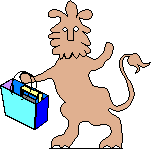
Rare Book School
Preliminary Reading
List
The Book in the Manuscript Era
Barbara A. Shailor
The course will use the following materials as the basic texts. Please read the items on the first list before coming to the class (if possible, reading them in the order in which they are listed). The second list has a series of recommended titles: read selectively in them as time permits, and review the plates and reproductions. The third list contains further possibilities for reading and a digital browsing resource; a selection of the images found on this website, entitled "Digital Scriptorium," will be used in class.
First List
1. Shailor, Barbara A. The medieval book. Toronto: University of Toronto Press, 1991; rep 1994 (Medieval Academy Reprints for Teaching, vol. 28).
First published as an exhibition catalog by the Yale's Beinecke Rare Book and Manuscript Library in 1988. Part I concentrates on the physical composition of medieval books beginning with the change from papyrus scroll; Part II looks at the genres of medieval manuscripts and their historical place in the cultures that produced them.
2. de Hamel, Christopher. Medieval craftsmen: scribes and illuminators. Toronto: University of Toronto Press, 1992 (frequently reprinted).
A good brief overview of the topic.
3. Shailor, Barbara A., et al. Adventure and art: the first one hundred years of printing: an exhibition of books, woodcuts, and illustrated leaves printed between 1455 and 1555 curated by Barbara A. Shailor, Leonard Hansen, and Michael Joseph; edited by Paul Needham and Michael Joseph. New Brunswick: Rutgers University Library; distributed by Rutgers University Press, 1999.
Read Shailor's introductory essay (pp. 9-19), which traces some of the complexities of the transition from manuscript book to printed book, referring to the plates and figures in the main text of the catalog entries.
4. Brown, Michelle P. A guide to Western historical scripts from antiquity to 1600. London: The British Library, 1990.
Second List
These works deal with specific topics to be covered in class (although not every aspect of each work will be considered). They are more detailed (and often more difficult to read) than the books on the first list.
5. Alexander, Jonathan J. G. Medieval illuminators and their methods of work. New Haven: Yale University Press, 1992.
6. Brown, Michelle P. Understanding illuminated manuscripts: a guide to technical terms. Malibu, CA: The J. Paul Getty Museum in association with The British Library, 1994.
7. Kilgour, Frederick G. The evolution of the book. New York: Oxford University Press, 1998.
8. Reynolds, L. D. and N. G. Wilson. Scribes and scholars: a guide to the transmission of Greek and Latin literature. 3rd edition. New York: Oxford University Press, 1991.
9. Babcock, Robert G. and Mark L. Sosower. Learning from the Greeks: An exhibition commemorating the five-hundredth anniversary of the founding of the Aldine press. New Haven: Beinecke Rare Book and Manuscript Library, Yale University, 1994.
10. Bischoff, Bernhard. Latin palaeography: antiquity and the Middle Ages. Translated by Dáibhí ó Cróinín and David Ganz. Cambridge, England: Cambridge University Press, 1990, especially pp. 7-47.
11. Gordon, Arthur E. Illustrated introduction to Latin epigraphy. Berkeley: University of California Press, 1983. Briefly consider the plates at the end of the text section.
Third List
Try meandering through the website:
http://sunsite.berkeley.edu/scriptorium.
In addition, you might also consult the "Selected Readings" on p. 111 of item 1, The medieval book, above.
Finally, for bedtime reading, consider:
12. Hans P. Kraus's autobiography, A rare book saga. New York: G. P. Putnam's Sons, 1978.
13. A. N. L. Munby's account of Sir Thomas Phillipps, Portrait of an Obsession: the life of Sir Thomas Phillipps; adapted by Nicolas Barker from the five volumes of Phillipps studies. New York: G. P. Putnam's Sons, 1967.